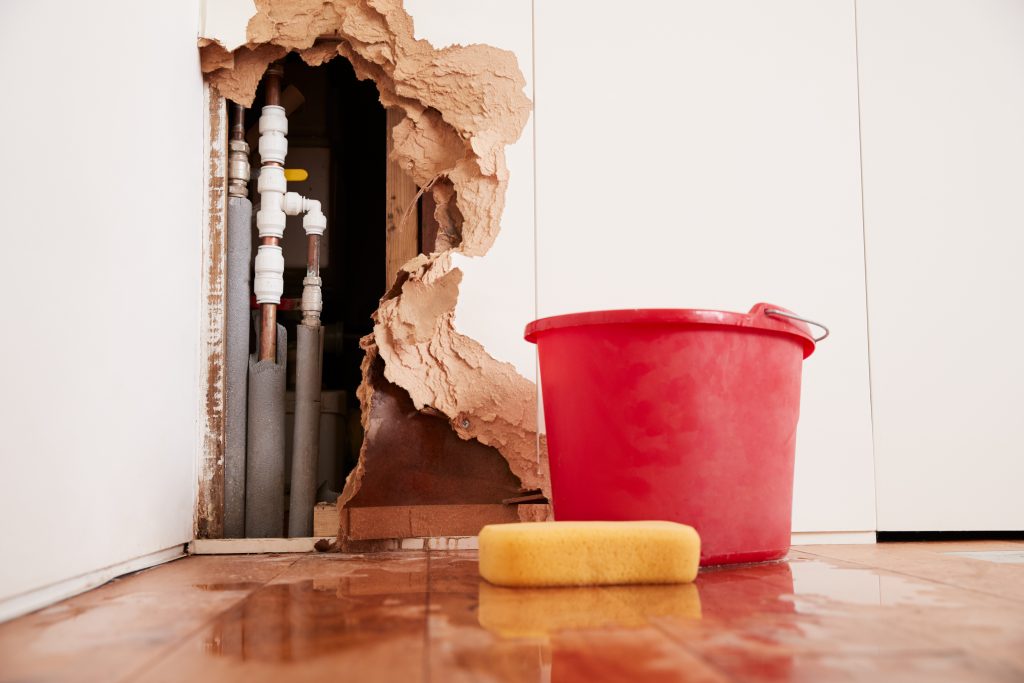Just how to Inspect If Your House Has a Hidden Leakage
Just how to Inspect If Your House Has a Hidden Leakage
Blog Article
Just about every person maintains their personal conception involving Top leak detection hacks.

The minute you find a leak, calling your plumber for fixings is the very best service. Some tiny water leakages might not be noticeable. Below are some hacks that help if you can not find it with your nude eyes.
Early discovery of dripping water lines can alleviate a prospective calamity. Besides conserving you cash, it will lessen the worry and irritation.
Inspect Water Usage
If you find abrupt modifications, despite your consumption being the same, it means that you have leakages in your plumbing system. An abrupt spike in your expense shows a fast-moving leak.
Meanwhile, a consistent rise monthly, despite having the same routines, shows you have a slow-moving leakage that's likewise gradually escalating. Call a plumber to completely inspect your property, especially if you feel a warm location on your floor with piping beneath.
Examine and Analyze the Scenario
Home owners should make it a practice to inspect under the sink counters as well as also inside cupboards for any type of bad odor or mold and mildew development. These 2 warnings indicate a leak so prompt attention is needed. Doing regular examinations, even bi-annually, can save you from a major trouble.
Check Out the Water Meter
Every home has a water meter. Examining it is a surefire manner in which helps you uncover leaks. For beginners, switch off all the water sources. Make sure no one will certainly purge, utilize the faucet, shower, run the washing device or dish washer. From there, most likely to the meter as well as watch if it will alter. Because nobody is using it, there must be no motions. That shows a fast-moving leak if it moves. If you detect no modifications, wait a hr or 2 and inspect back once more. This implies you may have a slow-moving leak that can even be underground.
Asses Exterior Lines
Do not neglect to check your exterior water lines as well. Should water leak out of the link, you have a loose rubber gasket. One small leak can squander bunches of water and spike your water bill.
Do a Food Coloring Test
When it comes to water consumption, 30% comes from bathrooms. If the shade somehow infiltrates your bowl throughout that time without flushing, there's a leak between the container and also bowl.
Much more notably, if you recognize your home is already old, keep a watchful eye on your heating units, hose pipes, pipelines and so on. Look for stainings and also damaging as most devices and pipes have a life expectancy. They will also naturally weaken due to wear and tear. Don't wait for it to rise if you presume leaking water lines in your plumbing system. Call an expert plumber right now so you do not end up with a terrible mess in your house.
The moment you find a leakage, calling your plumber for fixings is the best option. Some tiny water leakages may not be visible. Checking it is a surefire method that aids you find leakages. One small leakage can waste bunches of water as well as surge your water expense.
If you presume dripping water lines in your plumbing system, do not wait for it to escalate.
How to Know If Your Home Has a Hidden Leak
Water Meter Reveals Inexplicable Water Usage
If you’d like to test whether or not there’s a leak somewhere in your home, you can do this using your water meter. Here is how to conduct the test:
Don’t use any water in your home for at least 30 minutes; this also means not turning on faucets or water-using appliances.
Go outside, and check your water meter for activity.
If your water meter shows that there was activity, even though no one was using any water, this proves that there is a leak in your home.Visible Mold or Mildew Growth
Leaks behind walls create moist, dark environments that allow mold and mildew to grow and thrive. Eventually, you might see mold growth forming on the wall closest to a hidden leak.
If mold is growing in an area that receives a high amount of moisture, such as a bathroom, it may simply be an indication that better ventilation is needed. However, if you see mold growth on a wall or the ceiling in an area where you would not expect, you probably have a hidden leak.
Musty, Mildew Odor
Sometimes you might not be able to see the mold or mildew that is growing as a result of a leak. However, the smell can give the problem away just as easily. If you catch a whiff of something musty, there’s a good chance that old water is collecting somewhere in your home that you can’t see.
Stained/Warped Walls, Ceilings, or Floors
When your home soaks up water, a variety of red flags can become visible, including ceiling stains, bubbling drywall, warped walls, and sagging floors. While these issues can be caused by excess humidity, they can also be signs that a pipe or plumbing connection has started leaking behind your walls.
Inexplicably High Water Bill
After a while, you get a general sense for what your water bill should be. If you own a pool or sprinkler system, your bill will tend to be higher during summer. However, if you receive a water bill that seems especially high, and you can’t figure out what caused it, then you may have a hidden leak somewhere that’s increasing your bill.
https://www.plumbingjoint.com/blog/2019/july/how-to-know-if-your-home-has-a-hidden-leak/

Hopefully you enjoyed our article on Detecting hidden plumbing leaks. Thanks for taking the time to browse our article. Be sure to set aside a second to promote this blog posting if you enjoyed reading it. I appreciate reading our article about Detecting hidden plumbing leaks.
Report this page